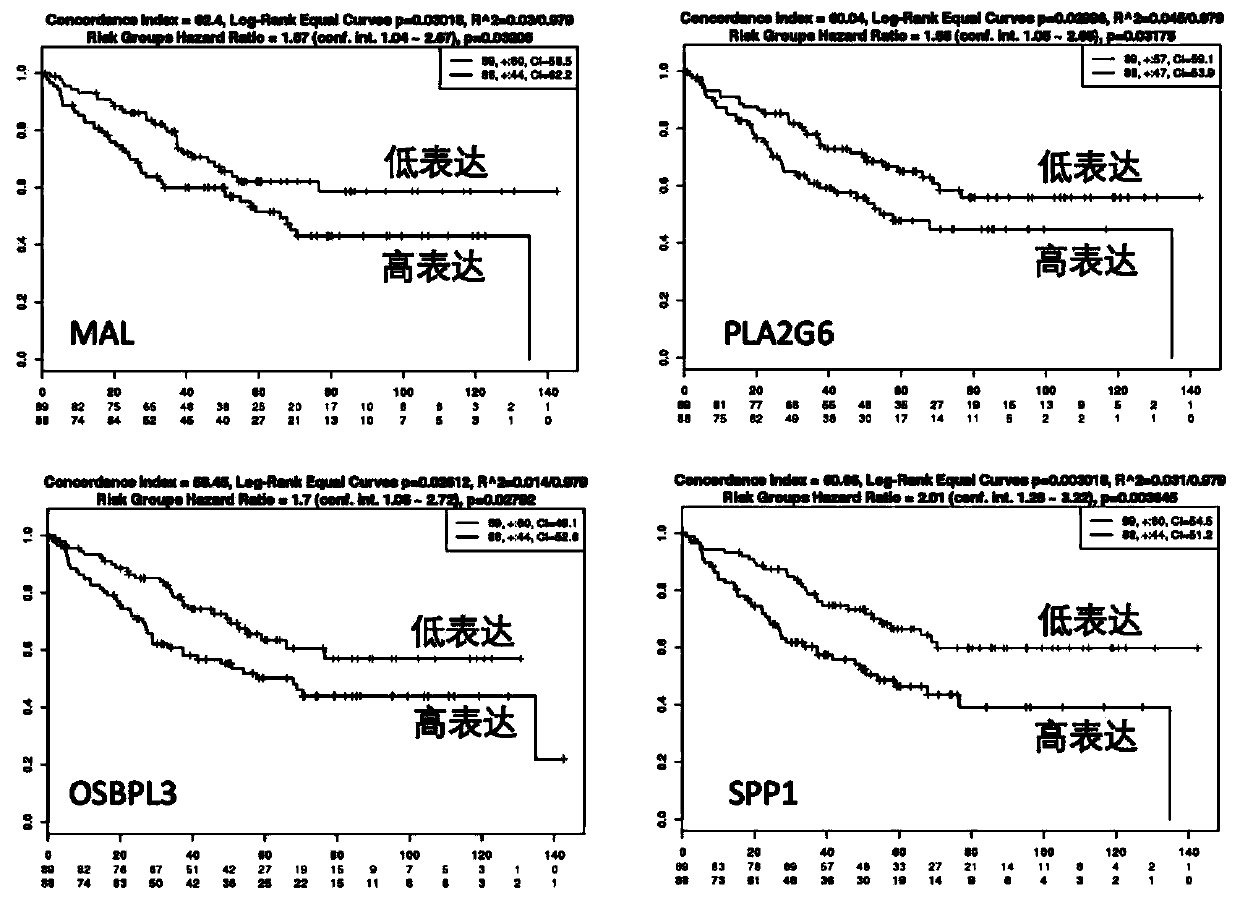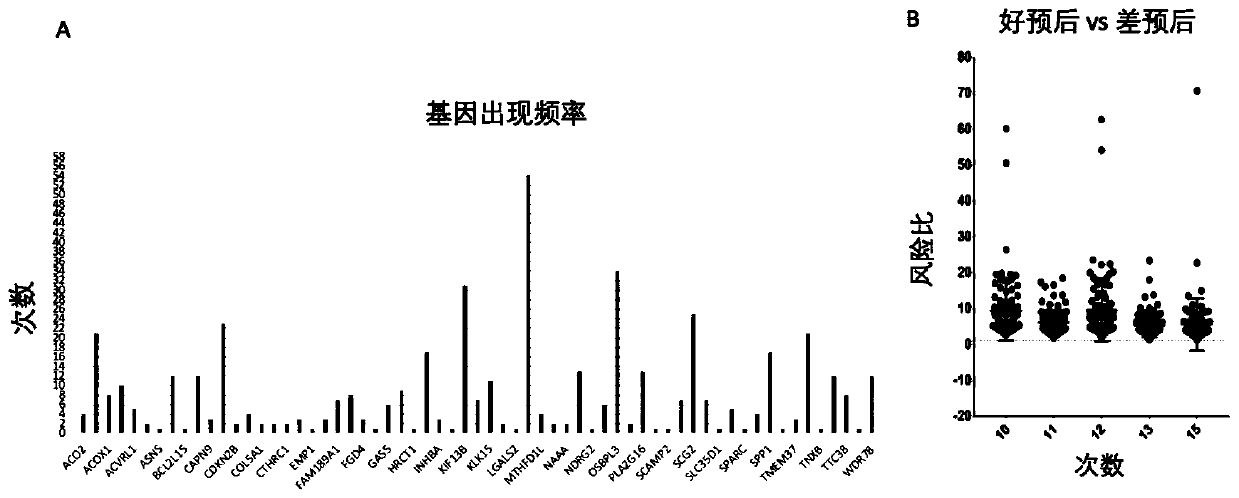Application of group of genes related to prognosis of colon cancer
A technology of colon cancer and genes, applied in the direction of recombinant DNA technology, microbe determination/testing, DNA/RNA fragments, etc.
- Summary
- Abstract
- Description
- Claims
- Application Information
AI Technical Summary
Problems solved by technology
Method used
Image
Examples
Embodiment 1
[0045] Compared with existing clinical application gene markers:
[0046] As mentioned above, Oncotype DX 7-genome is currently available in foreign markets to evaluate the prognosis of colon cancer. We compared a 15-gene scoring system to this system. We used the multivariate Cox regression analysis method to analyze the 7 genes in the previous 100 training sets, calculated the corresponding coefficients of each gene with the same method and took the average value, and calculated the TCGA 373 cases of colon cancer patients with the same formula prognostic score. The patients in the training group were sorted according to their prognosis scores, and the patients were divided into three groups with the same number of cohorts according to the scores, and the prognosis scores corresponding to the corresponding cut-off points were recorded, and the average value of the scores corresponding to each cut-off point was taken as the real cut-off point According to these two cut-off s...
Embodiment 2
[0048] To predict the prognosis of patients with clinical colon cancer:
[0049] The tumor tissues of patients with colon cancer received clinically were collected and RNA was extracted, and the tumor tissues may include fresh biopsy tissues, postoperative tissues, fixed tissues and paraffin-embedded tissues. Then, the expression levels of 15 genes in the prognostic scoring system were quantitatively detected with the kit developed by the present invention and corresponding instruments. The expression level of 15 genes is entered into the prognosis score formula that the present invention establishes:
[0050]
[0051] After calculating the patient's prediction score, the doctor predicts the patient's prognosis based on the score, such as the 5-year survival rate. At present, we have established a model through retrospective research and successfully verified it in different databases (Table 3). By calculating the prognostic score of all patients in the database, and rank...
Embodiment 3
[0053] Predicting response to the chemotherapeutic agent 5-fluorouracil in patients with clinical colon cancer: Survival of untreated patients with metastatic colon cancer is approximately 6 months. 5-Fluorouracil (5-Fu) is still the core drug in colon cancer chemotherapy. At present, colon cancer chemotherapy has a high recurrence rate and low effective rate. In order to reduce ineffective or excessive drug use and reduce medical costs, the present invention predicts the response of clinical colon cancer patients to the chemotherapy drug 5-FU through the implementation of the following scheme: for colon cancer received clinically Patients collect tumor tissue and extract RNA. Tumor tissue can include fresh biopsy tissue, postoperative tissue, fixed tissue, and paraffin-embedded tissue. Then, the expression level of the 15 genes of the prognostic scoring system was quantitatively detected with the kit developed by the present invention and corresponding instruments. The expre...
PUM
 Login to View More
Login to View More Abstract
Description
Claims
Application Information
 Login to View More
Login to View More - R&D
- Intellectual Property
- Life Sciences
- Materials
- Tech Scout
- Unparalleled Data Quality
- Higher Quality Content
- 60% Fewer Hallucinations
Browse by: Latest US Patents, China's latest patents, Technical Efficacy Thesaurus, Application Domain, Technology Topic, Popular Technical Reports.
© 2025 PatSnap. All rights reserved.Legal|Privacy policy|Modern Slavery Act Transparency Statement|Sitemap|About US| Contact US: help@patsnap.com



